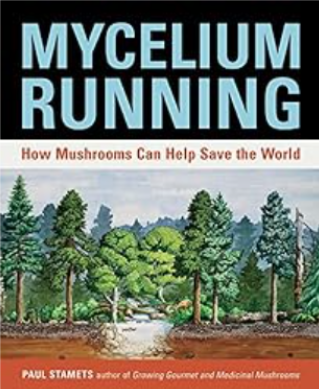Mycelium Running - A Book Summary
7/13/20244 min read


This is one of the first books I read about mycology. It gave me insight into a world I barely knew existed below the surface. In this writing I briefly summarize each chapter in the way that I've come to understand the ideas and concepts presented in the book. This is one of the books that I recommend picking up if you are just starting to learn about mushrooms and want to see why everyone gets so excited about fungi.
CH 1 - Mycelium as Natures internet
CH 2 - The Mushroom life cycle
CH 3 - Mushrooms and Their Natural Habitats
CH 1 - Mycelium as Natures Internet
Everything is connected. The mushrooms we all know of, the mysterious cap and stem organisms that pop up after a rain and quickly disappear are much more than what we see on surface. The mushrooms we see above ground are connected to vast inter-cellular networks that is in constant communication with the environment. These networks can span great distances and help regulate the ecosystems by recycling organic matter, pollutants, and other debris turning that material into a usable resource for the nearby inhabitants. They can even break down rocks and mineralize them which allows rocks to be used as a nutrient source.
Fungi have been around for millennia and have been dated back as far as 700 million years. At one point they partnered with plants allowing them to become terrestrial organisms. They are organisms that emerge after mass extinction events and begin setting up the environments for the next succession of terrestrial species.
These mycelial networks are so intelligent that Stamets hypothesizes that we can use them to communicate since they have the capacity to transfer large amounts of data quickly from their environment. This can potentially be structured in a way for mycelium to monitor environments. The mycelial networks grow in the same form as neurological systems like the brain and information network systems. In 200, Toshuyiki Kakagaki tested Physarum polycephalum, a slime mold, in a petri dish maze with oat flakes on the opposite end. The maze was a representation of the Japanese subway system in Tokyo. The mold always found the shortest route to the oat flakes; the intelligence in nature is interesting.
Human activity and infrastructure development hasn't taken into account the ripple effects that permeate surrounding ecosystems. The use of chemicals in agriculture and at home have led to food web disruption. Non discriminate fungicides and herbicides destroy food chains, contaminate soils, water supplies, and lead to ecological collapse. We can enlist the help of fungi to combat these fractures in the environment and weave those pieces back together with mycelial threads. We can introduce symbiotic fungi to the soil and use saprophytic fungi on the surface to break down material causing a synergy of nutrient cycling and biodiversity. To the degree that we live in harmony with the natural world, determines our level of health. Run with the mycelium.
CH 2 - The Mushroom Life Cycle
The life cycle of mushrooms starts with a tiny spores dispersed by the mushrooms we see above ground. These tiny spores contain half of the genetic information of the parent mushroom. Spores are spread by air, water, insects, and even us. When the conditions are just right, the spores germinate and a tiny filament emerges called a hyphae. This tiny thread begins to spread by digesting organic matter using specially manufactured enzymes. They use the resources in the environment to build more of its network called mycelium. This network spreads and when it finds compatible mycelium, fuses together and is able to form fertile mushrooms.
Mushroom fruit bodies come in many shapes and sizes to spread their spores. You can take these spores and produce your own own mushrooms. Mushrooms grown from spores will be of a variable phenotype. You can also take tissue from a fresh mushroom and propagate it to produce more mycelium and hence more mushrooms. Mushrooms grown from tissue samples will have the exact genetic profile of the contributing mushrooms. Propagation methods are discussed in a later chapter.
CH 3 - Mushrooms and Their Natural Habitats
The life cycle of mushrooms starts with a tiny spores dispersed by the mushrooms we see above ground. These tiny spores contain half of the genetic information of the parent mushroom. Spores are spread by air, water, insects, and even us. When the conditions are just right, the spores germinate and a tiny filament emerges called a hyphae. This tiny thread begins to spread by digesting organic matter using specially manufactured enzymes. They use the resources in the environment to build more of its network called mycelium. This network spreads and when it finds compatible mycelium, fuses together and is able to form fertile mushrooms.
Mushroom fruit bodies come in many shapes and sizes to spread their spores. You can take these spores and produce your own own mushrooms. Mushrooms grown from spores will be of a variable phenotype. You can also take tissue from a fresh mushroom and propagate it to produce more mycelium and hence more mushrooms. Mushrooms grown from tissue samples will have the exact genetic profile of the contributing mushrooms. Propagation methods are discussed in a later chapter.
More chapters coming soon...
Sources
Stamets, P. (2005). Mycelium running: How mushrooms can help save the world. Berkley: Ten Speed Press.
Mycobuddy LLC is not responsible for the misuse of this information and is not liable for damages, losses, or injury resulting from its use.


Stay Real,
Louis San Miguel
